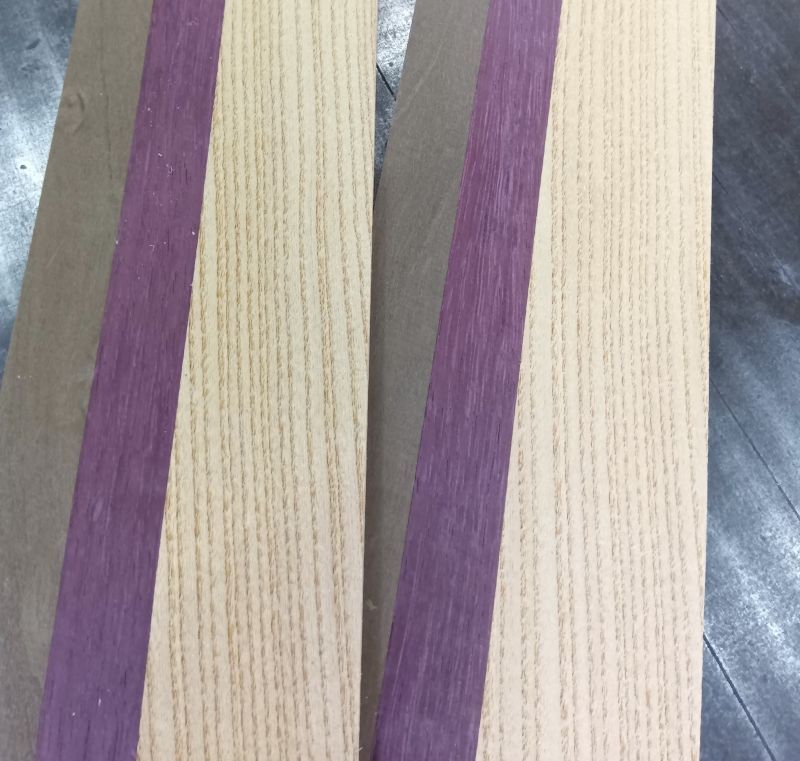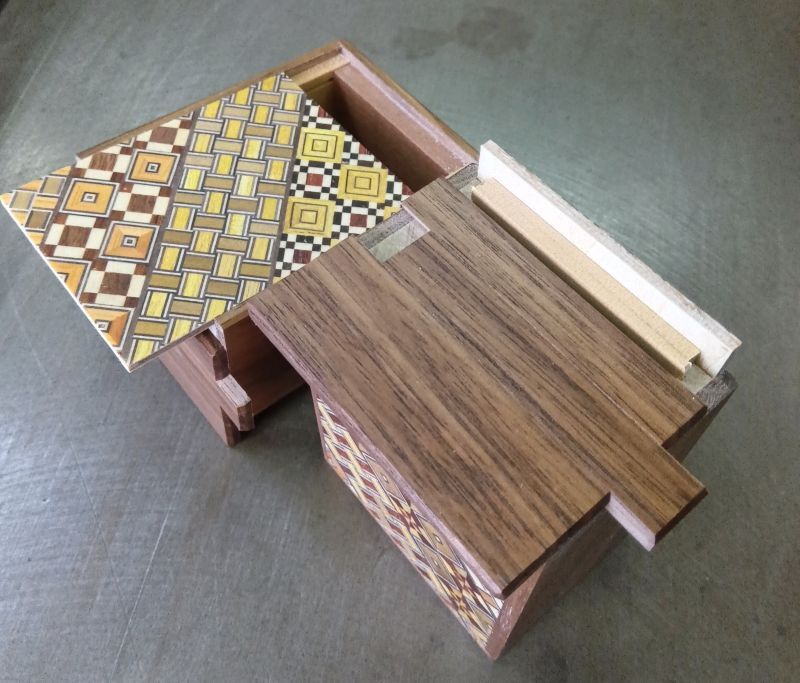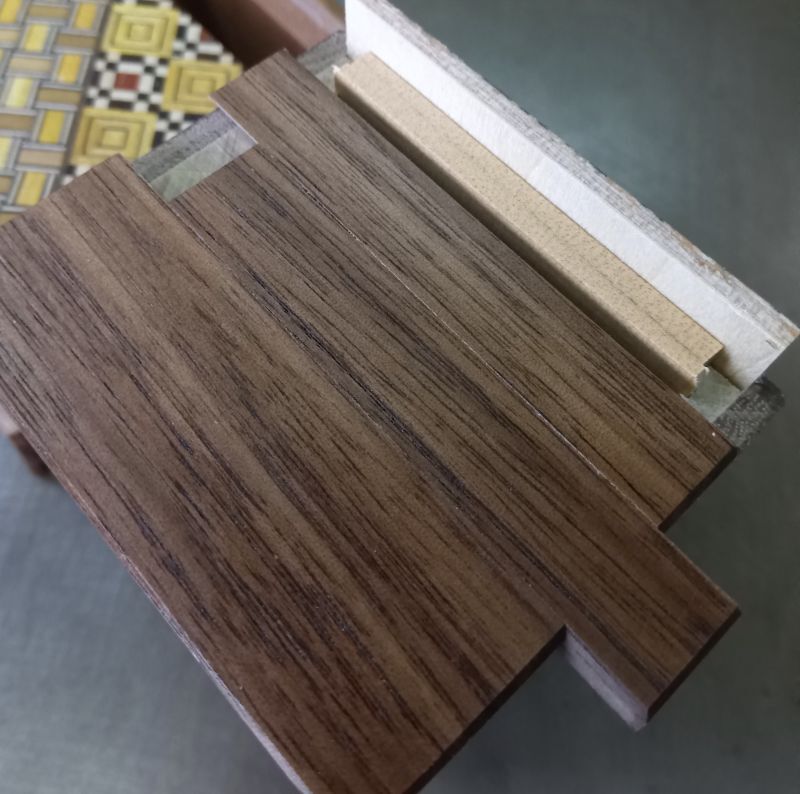Natural wood
I am starting to make some 4 sun 14 steps Japanese puzzle boxes. This time, I plan to use natural wood side panels (the sides of the box) made of walnut wood. The top and bottom panels will be made of Zebra wood sheet. As shown in the photo, I plan to create only three pieces with the natural wood design at the same time. These are intended for use on the top and bottom panels of the box, combining three types of natural wood. This natural wood panel is made of Keyaki, Purple heart, Hoo wood.
By the way, it has been a while since I made a 4 sun box with a natural wood top panel like this. While I occasionally make natural wood designs for smaller boxes, such as 3-sun or 2-sun sizes, I haven't made a 4-sun size recently. I plan to be more proactive in making them in the future.
Traditional yosegi designs are popular, but natural wood designs are also beautiful. One feature I particularly recommend in natural wood puzzle boxes is that, as shown in the photo, the part of the sliding key (Kannuki) is hard to discern. This photo shows a 3-sun box I recently made, with walnut wood used for the side panels. When the box is completely closed, the part of the sliding key is cleverly concealed.
As some of you may know, when making the sliding key panel, a single board is cut into three parts. When using a saw, the thickness of the saw blade removes a portion of the wood. Therefore, with a Yosegi sheet, the pattern is also cut away, causing the yosegi design not to align perfectly. As a result, it becomes easier to find the point of the sliding key in Yosegi boxes because the yosegi pattern is slightly misaligned. However, with natural wood side panels, this issue does not occur. Therefore, when the three parts of the sliding key panel are attached, the moving part is hidden and difficult to detect, enhancing the puzzle box's overall quality.
Various natural wood side panels can effectively hide the point of the sliding key, but walnut is particularly good. Its darker color makes it even harder to discern that point. The calm atmosphere it provides is also popular😊
By the way, it has been a while since I made a 4 sun box with a natural wood top panel like this. While I occasionally make natural wood designs for smaller boxes, such as 3-sun or 2-sun sizes, I haven't made a 4-sun size recently. I plan to be more proactive in making them in the future.
Traditional yosegi designs are popular, but natural wood designs are also beautiful. One feature I particularly recommend in natural wood puzzle boxes is that, as shown in the photo, the part of the sliding key (Kannuki) is hard to discern. This photo shows a 3-sun box I recently made, with walnut wood used for the side panels. When the box is completely closed, the part of the sliding key is cleverly concealed.
As some of you may know, when making the sliding key panel, a single board is cut into three parts. When using a saw, the thickness of the saw blade removes a portion of the wood. Therefore, with a Yosegi sheet, the pattern is also cut away, causing the yosegi design not to align perfectly. As a result, it becomes easier to find the point of the sliding key in Yosegi boxes because the yosegi pattern is slightly misaligned. However, with natural wood side panels, this issue does not occur. Therefore, when the three parts of the sliding key panel are attached, the moving part is hidden and difficult to detect, enhancing the puzzle box's overall quality.
Various natural wood side panels can effectively hide the point of the sliding key, but walnut is particularly good. Its darker color makes it even harder to discern that point. The calm atmosphere it provides is also popular😊


